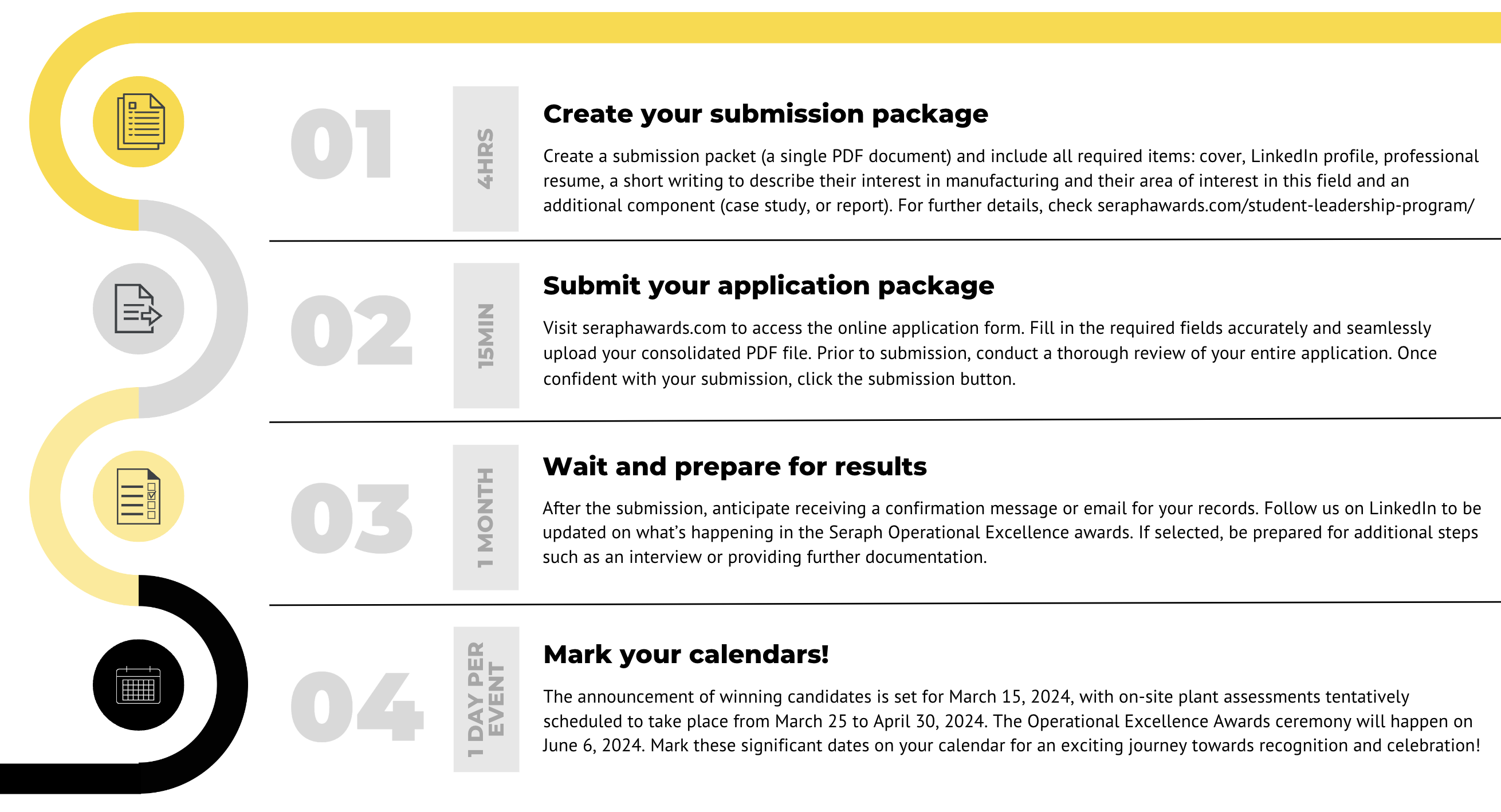Calling all Students Studying Fields in Manufacturing!!
Introducing the Manufacturing Excellence Leadership Program!
Reap significant rewards by investing a small amount of your time.
Are you about to start your career in some avenue of automotive manufacturing? Are you looking to take advantage of opportunities that can help advance your knowledge and exposure to the industry?
The Seraph Manufacturing Excellence Leadership Program provides a unique opportunity for individuals like you to get an up close and personal experience in conducting an in-plant manufacturing assessment, meet industry executives that you can leverage in your career path and receive a $1,000 scholarship.
Follow this comprehensive guide on how to apply and mark your journey towards success:

Important Dates:
Please be aware of the following dates (subject to slight adjustments):
- Enrollment period: November 1, 2023, through February 29, 2024.
- Finalists’ evaluation: March 1 – 8, 2024.
- Winning candidates’ announcement: March 15, 2024.
- On-site plant assessments: Tentatively scheduled from March 25 to April 30, 2024.
- Operational Excellence Awards ceremony: June 6, 2024.
Who Should Apply:
We are seeking students who are studying manufacturing, industrial engineering, supply-chain and/or operations management.
We welcome applications from:
- University graduates who are in their first year (of a 2-year graduate degree program) or first or second year (of a 3-year graduate program).
- University undergraduates in their sophomore, junior or senior year.
- Seniors in technical high schools.
*Applicants must reside within the United States.





